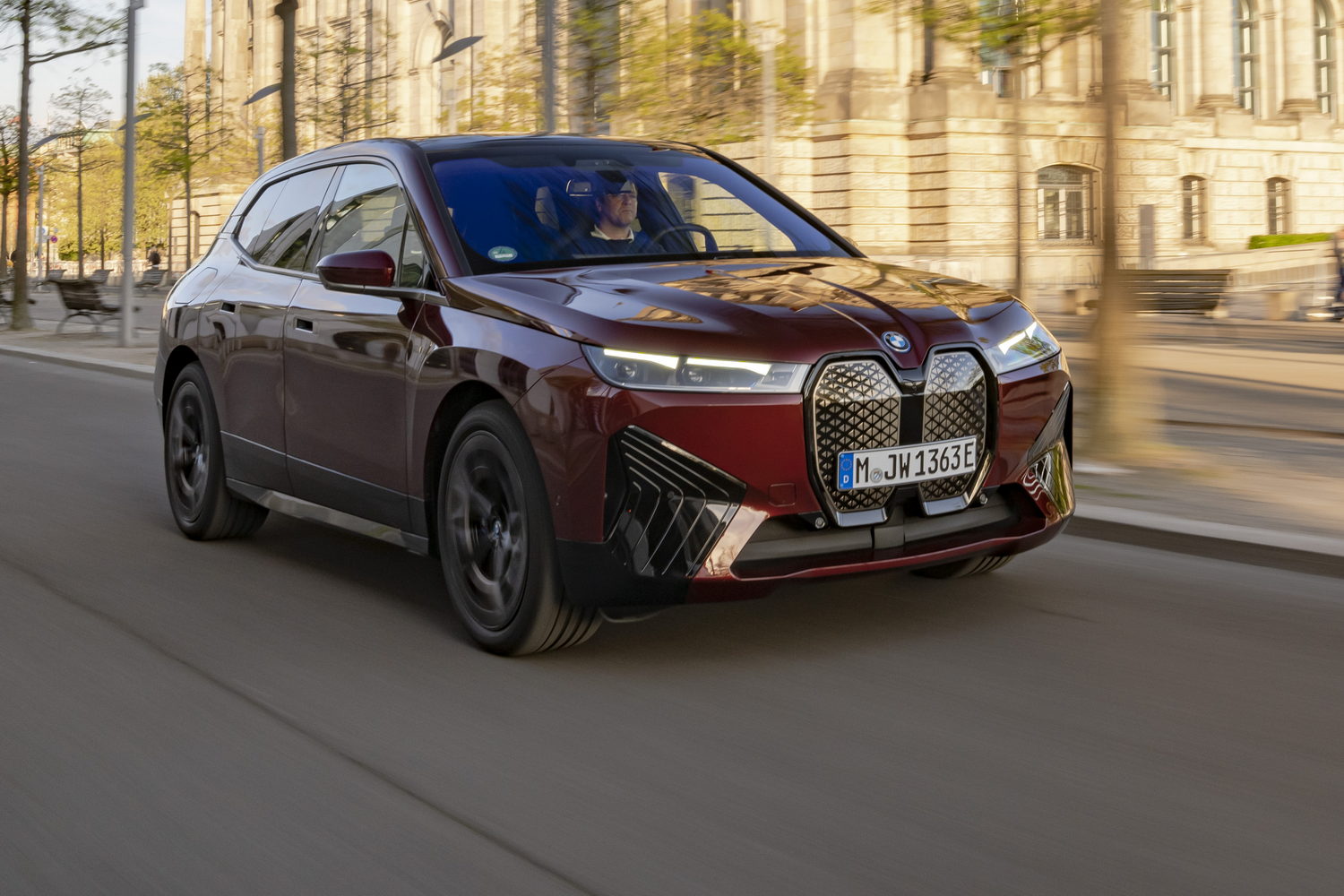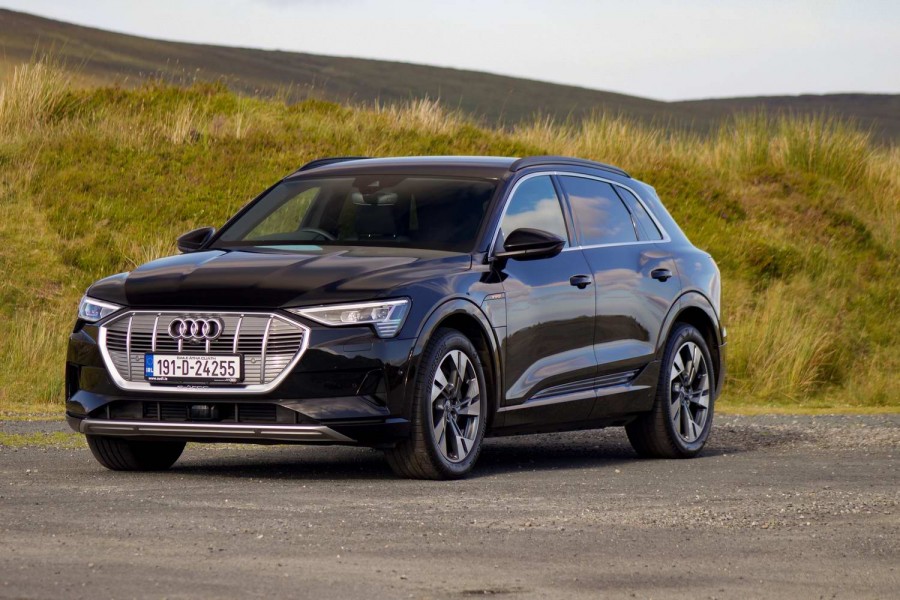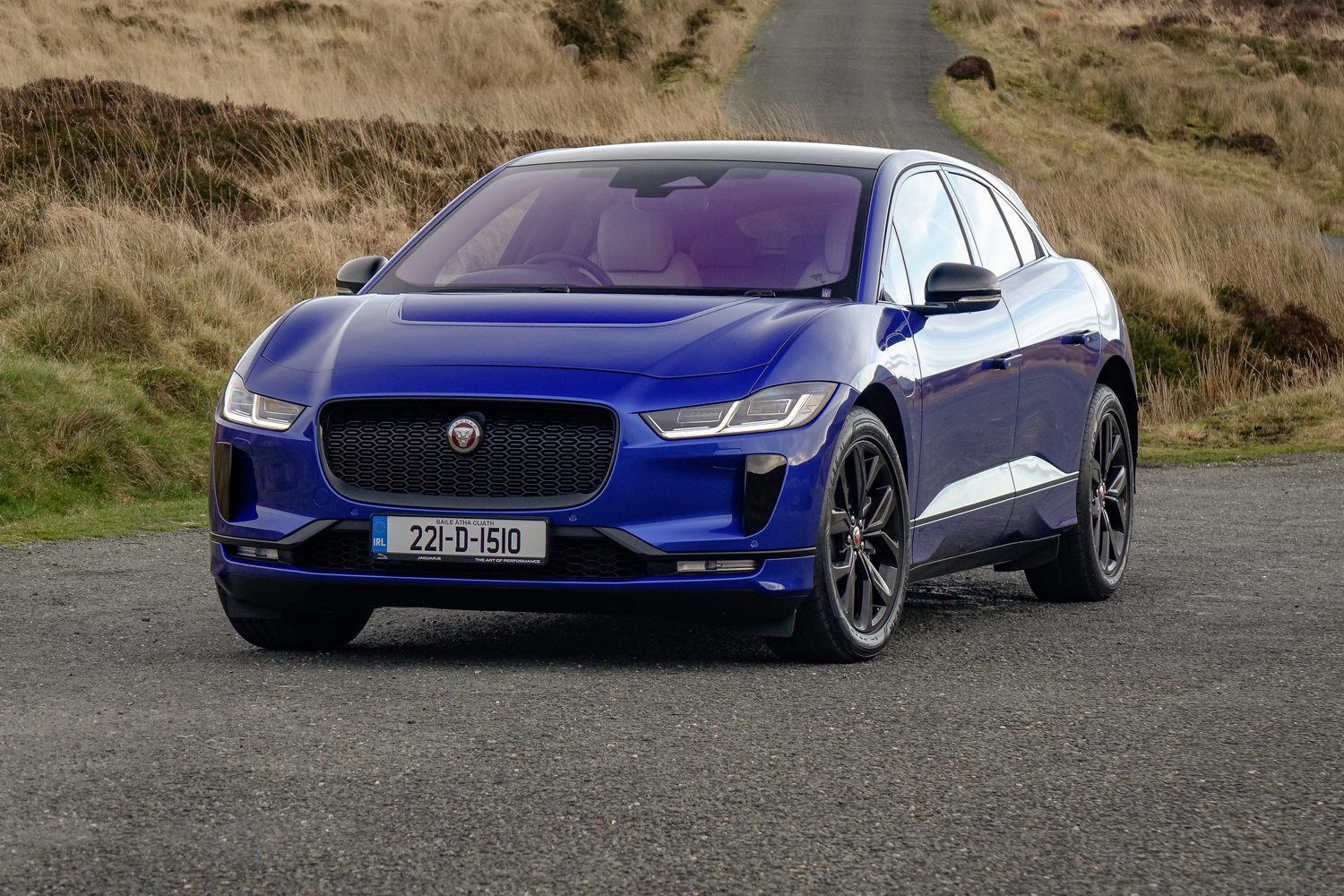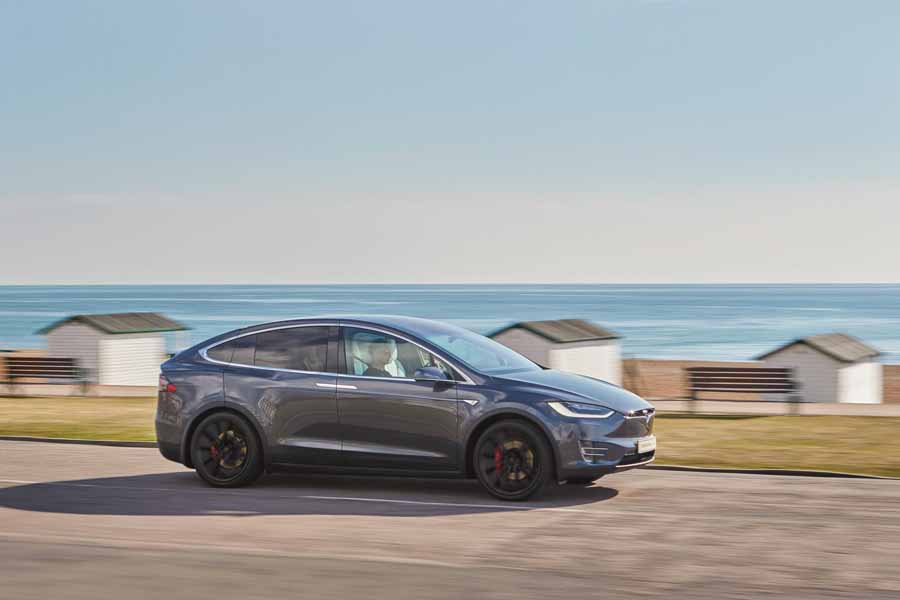The BMW iX has already impressed us with its futuristic cabin and exceptional comfort, as well as its outrageous acceleration. But someone at BMW clearly felt even more performance was required, turning the already ballistic iX into some kind of zero-emission, M-badged rocket ship. The iX M60's headline figures are astounding, but the proof of the pudding is in the eating, so we hit the road to find out whether BMW's engineering effort was worth it.
In the metal
This is BMW's idea of an iX M - the fastest and most powerful iteration of the divisive iX SUV. Opinions of the standard car vary, but few reviewers concluded that the mid-range xDrive50 model was short of power. In fact, we praised the car's electric powertrain until the cows came home, dubbing it "effortless" and "savage" at the same time.
Nevertheless, BMW decided a faster 'M' version was needed, and this is that very car. Externally, it doesn't look much different to the standard vehicle, with just a few black-and-gold badges marking it out. Apparently, BMW's designers reckoned the iX already looked bold enough. Can't think why...
Inside, the changes are even less pronounced. When you step in, there's almost nothing to tell you this is an M car, aside from some new M logos on the in-car screens. Otherwise, it's conventional iX stuff, including the posh materials, spacious 500-litre boot and plentiful room for passengers.
Not that the iX's interior could ever really be described as conventional, thanks to that space-age design. The dashboard is almost entirely button-free, with a curved digital display dominating proceedings. Part of that display is dedicated to the driver, offering a configurable digital instrument cluster that's clearer and less fussy than the screen in most BMW models. Or it can be if you configure it that way, at least.
The touchscreen infotainment system is even more impressive, with sharp displays and rapid responses, as well as the option of using a rotary controller if the mood takes you. It sounds confusing, but when you've learned your way around the screen and you're on the road, it's a much less distracting way of controlling the on-board systems that reaching out and touching the screen.
And with an almost total lack of buttons, it's a good job that infotainment system is so capable. All the heater controls are hidden in there, as are some of the vehicle functions and, of course, all the media and navigation systems. With so much going on, the screen does take some getting used to, but it's mostly logical and there aren't too many pitfalls to trip you up.
Given the similarities between the xDrive50 and M60 cabins, it's clear that the big changes are to be found under the skin, where BMW has traded the iX xDrive50's rear motor for a new, upgraded unit. It's still a twin-motor, all-wheel-drive system, but one with more power and more torque, which in turn means more straight-line performance.
But BMW hasn't just taken aim at the performance figures when building the M60. The company claims to have tuned the suspension in a bid to make the iX more fun to drive in corners, fitting M-specific adaptive dampers and rear-wheel steering as standard. And all to make the M60 more stable at speed and more agile in corners.
Driving it
BMW may be hawking the iX M60 as an M car - the electric equivalent of the X5 M Competition, if you will - but it doesn't really deserve to share the stage with cult heroes such as the M3 and M5 CS. Don't get us wrong, it's prodigiously fast, but it lacks the handling prowess to mix it with even BMW's M-badged combustion-engined SUVs.
The problem with the xDrive50 model was not a lack of power, but its softness and cushiness. That made it great over long distances or around town, but it didn't have the body control to make it fun on your favourite back road. That's fine, because too many cars have sacrificed comfort in search of handling perfection, but in an M car the rules are different. We were hoping the iX M60 would be much more capable in the corners, and we weren't too concerned about straight-line speed.
Unfortunately, BMW clearly felt very differently, and the iX M60 is still an incredibly soft, comfortable car to waft about in. It doesn't quite glide over bumps - it's too heavy for that - but nor does it thump into potholes or judder over broken asphalt. Instead, it soaks up the punishment without question or complaint, leaving those in the cabin to enjoy a much smoother ride. Only in the sportier driving settings does it get stiffer and less comfortable, but it doesn't exactly turn into an ultra-stiff racing car. You just notice the bumps a little more.
All that means the M60 really doesn't ride much differently to the xDrive50, but the problem is it doesn't handle much differently either. In its more comfort-orientated settings, which are the ones most drivers will use every day, the M60 wallows and leans a little more than we'd like, as those soft springs allow the heavy body to follow the laws of physics. There's plenty of grip and the steering is great, but it just doesn't feel as planted as, say, an X5 M Competition. As you'd expect, it's better in a sportier setting, but even then, it isn't as nimble as we'd hoped.
But maybe that isn't surprising when BMW itself says this car is designed for those who want to do long motorway journeys. More specifically, Germans who want to do long motorway journeys. One of the key differences between the xDrive50 and the M60, therefore, is the increased top speed, which rises from 200km/h to 250km/h, giving the iX more scope to mix it with the fast saloons in the outside lane of the German autobahns.
More impressive, however, is not how fast the M60 can travel, but how quickly it can get to such hair-raising speeds. With the addition of that new rear motor, power has increased from an already plentiful 523hp to an even meatier 619hp. And maximum torque has risen from 765Nm to over 1,000Nm. And when launch control is engaged, you get 1,100Nm to play with.
The results are, quite frankly, alarming. The sprint from 0-100km/h takes a supercar-rivalling 3.8 seconds, while the mid-range grunt produces neck-snapping results. In sport mode, when all the power is available, the response is so savage it's physically uncomfortable. There's no linear acceleration you get from petrol-powered performance SUVs; instead, the car leaps from one speed to an altogether different one. It's like the USS Enterprise in warp speed. One minute it's there, the next it's gone.
It makes a noise while doing it, too. BMW has given the M60 its own voice, piping in a sound created by composer Hans Zimmer through the speaker system. It may be the product of music royalty, but it feels fake and contrived, so we turned it off. After which, the iX became quiet and refined, as we've come to expect from electric luxury cars. It could even be described as relaxing.
Even so, we can't really see the point of this M60 model for Irish drivers. Yes, the performance figures will certainly impress your mates, but the truth is the xDrive50 was already monstrously fast. With a 0-100km/h time of 4.6 seconds it's hardly a slouch, and it's also more subtle in the way it delivers that power. It's still mighty impressive, but there's somewhat less risk of whiplash.
The xDrive50 also offers more range than its sibling, achieving 630km on the official test. For the M60 version, which has the same battery pack, that figure falls to just over 560km. When you're talking about such large numbers, perhaps 70km doesn't matter too much, but it's still a drop of more than 10 per cent.
At least charging the battery can still be completed quickly, with the iX M60 taking on charge at up to 200kW, assuming you can find a charging point that's up to the task. If you can, it'll get from 10- to 80 per cent charged in 35 minutes.
What you get for your money
The iX M60 costs €143,675, which makes it just over €20,000 more expensive than an xDrive50 in M Sport trim. That's a big price hike, but it doesn't earn you any real styling changes, and nor does it change the cabin very much. Yes, you get just under 100hp more and a higher top speed, but it's less than a second faster to 100km/h and there's no real change in the level of standard equipment. For an extra €20,000, we'd expect more.
Summary
The M60 is an unnecessary addition to the iX range. We were hoping for a stiffer, more focused version of the electric SUV that would give the iX the handling to match its performance, but we were left disappointed. Instead, BMW has effectively just given the conventional iX a higher top speed to satisfy German customers who felt 200km/h was insufficient for motorway driving. Yes, it's unbelievably quick - uncomfortably so, at times - but so too was the xDrive50, which has more range and a lower price tag. On that basis, and on these shores, we'd suggest you stick with the xDrive50.




































